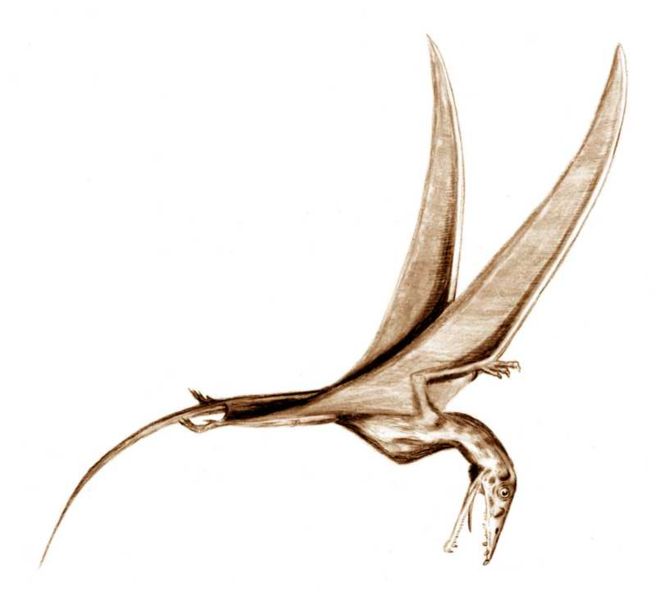 |
 |
 |
 |
 |
Produced
by the Population Genetics and Evolution class, Furman University |
||||
 |
 |
 |
 |
 |
Produced
by the Population Genetics and Evolution class, Furman University |
||||
 |
The
Triassic: Pterosaurs |
 |
||
| Pterosaurs,
flying archoasaurian reptiles, were the first vertebrates to evolve true
flight. They were competent in flight and evolutionarily successful, surviving
for 140 million years (Hutchinson 1995). Pterosaurs are closely related
to dinosaurs, but their true ancestors are unknown, and the poor Triassic
fossil record does not help in their identification. However, it has been
speculated that they may have been derived from the small archosaur Schleromochlus,
due to the similarity of its skull and presumed arboreal nature (even
possibly having gliding capabilities). The earliest known pterosaur was
Eudimorphodon (unique in their dentition), succeeded by three
other Triassic genera, Austriadactylus, Peteinosaurus,
and Preondactylus. They were all fairly small, and most likely
fed on insects and fish (Orcutt 2005). An elongated fourth digit supported
the pterosaur wing. Other flight adaptation included a keeled sternum
(for flight muscle attachment), a shortened humerus, and hollow limb and
skull bones. Triassic Pterosaurs had tails for balance, although these
were lost in more derived forms. Modified epidermal structures served
as wing fibers, and may have had a role in thermoregulation. They also
had a unique bone, the pteroid bone, which pointed from the wrist to the
shoulder to support the wing membrane.
Page by Megan Aprill |
 |
| Eudimorphodon. Picture from: Wikipedia.com | |
|
Dalla Vecchia FM. 2003. A Review of the Triassic Pterosaur Diversity. Accessed on March 23, 2010. Hutchinson JR. 1995. Vertebrate Flight. University of California Museum of Paleontology (UCMP) Accessed March 23, 2010. Orcutt
JD, 2005. Pterosuar Fossil Record. University of Bristol. Accessed
March 23, 2010. |